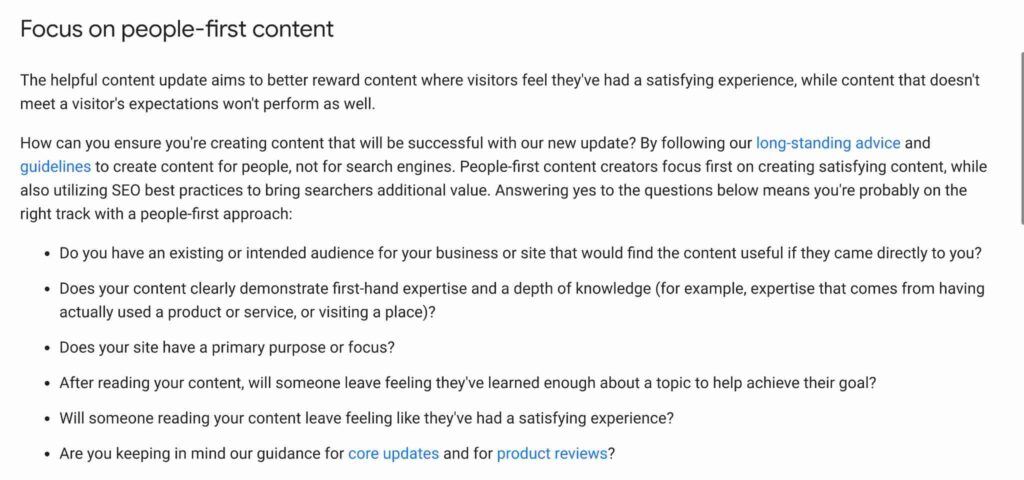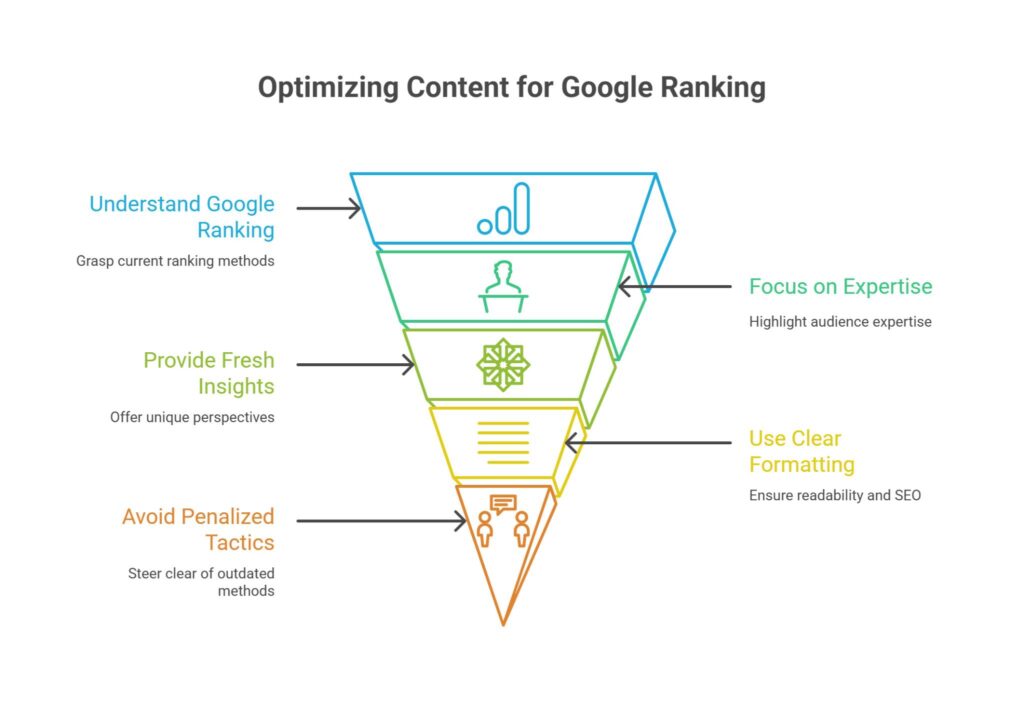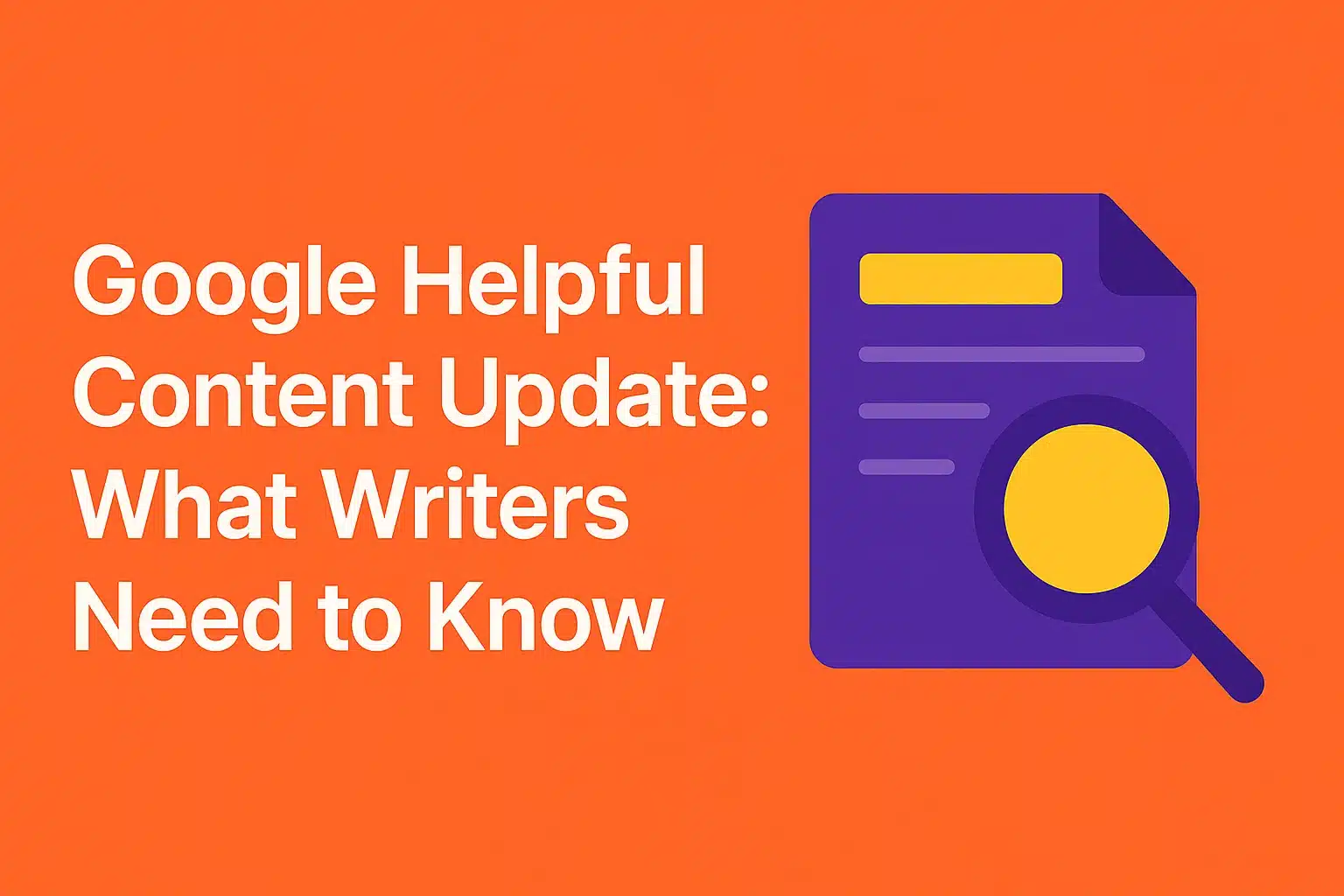Budding writers often question how Google’s updates affect their content strategy. The google helpful content update highlights Google’s aim to reward pages that solve real questions instead of feeding search engines with empty text. This shift encourages creators to address searchers’ needs with true value. As a result, content that matches with user intent stands out. This blog covers key concepts behind the update, the push for people-first writing, and ways to produce content that maintains search presence in light of Google’s changing approach.
What is the Google Helpful Content Update?
This update is Google’s effort to show pages that address genuine user needs. It checks an entire site, not just single posts, and reduces exposure for articles geared purely toward search rankings. Google wants creators to offer useful insights and detail instead of copying popular phrases. This approach encourages unique perspectives and inspires experts to write from direct firsthand skill.
When did the helpful content update launch?
This update arrived in August 2022 as part of Google’s broader algorithm rollout. Site owners saw changes as Google tested how best to reduce unhelpful results. More refinements appeared in 2023, including an improved system that spotted shallow or copied text. This was not a one-time shift; Google has improved the system multiple times to reward pages that serve actual readers. The timeline shows Google’s plan to keep removing content created only for bots, making sure better answers for users.
What is the goal of this google algorithm update?
The goal is to reward pages that meet users’ needs first. Google aims to stop the spread of meaningless text, focusing on thoughtful answers with thorough coverage. By emphasizing real insight, the update encourages writers to rely on personal skill or true research rather than filling space with keywords. Google wants to provide searchers with actual help, rather than fluff. This approach helps remove pages that chase rankings without bringing unique value. The system matches with Google’s user-focused vision.
“The helpful content update aims to reward content where visitors feel they’ve had a satisfying experience, while content that doesn’t meet a visitor’s expectations won’t perform as well.”
— Google Search Central
How is helpful content seo different from other updates?
This update focuses on pages that give real insight, unlike earlier tweaks that mainly addressed spam or keyword misuse. Google released the helpful content system in August 2022 and improved it in September 2023, which led to major ranking shifts for many sites. One site notes Google reduced unhelpful content in search results by 45%. Unlike past changes, this system examines an entire website, so older low-value articles can hurt overall performance. Google’s goal is a sitewide signal that promotes thoughtful writing.
Why Google favors High Quality Content Now
Google wants to keep searchers happy by showing answers that solve real questions. Long ago, keyword-heavy posts could rank well. Now, Google ranks content that displays trust, expertise, and freshness. This focus protects users from scam or shallow pages. As a result, websites with thorough, honest facts earn better exposure. Google believes genuine writing creates a positive feeling for everyone.
How does Google define high quality content?
Google sees it as material that offers accurate details and relies on trusted sources. It avoids fluff and addresses the user’s core question with clarity. Such content includes examples or data that strengthen trust. Google also notes that grammar and clarity improve the user feeling. High-grade writing uses honest expertise and avoids clickbait claims. It tries to inform rather than mislead visitors. Google’s framework considers truth, trust, and fresh value over generic or repeated points. This approach benefits users.
Why are people-first pages favored over SEO-first pages?

Google evaluates billions of pages in under one second. It wants to show pages that help humans, not ones filled with tactics aimed at bots. People-first content builds trust and matches with Google’s E-E-A-T approach of experience, expertise, authoritativeness, and trustworthiness. SEO-first pages often chase traffic without offering substance. By favoring people-first writing, Google guides users toward answers with depth. This matches with earlier updates that penalized keyword stuffing and shallow text. Pages made for people stay relevant.
What signals show that content is written for users?
Google looks for evidence that visitors remain on a page because it answers their query. Factors like dwell time, clicks, and backlinks can show that a page is worth showing again. Pages that meet user needs usually present clear headings, relevant subpoints, and helpful examples. Repeated or keyword-packed text suggests a push for rankings over genuine value. Google also considers data like bounce rates. If readers see answers fast, they interact more. This behavior shows that the material is made for them.
How to Create Content That Ranks Well Post-Update
Writers can boost exposure by emphasizing user-based pages. Google rewards material that addresses core questions thoroughly, based in personal expertise. This approach covers realness, formatting, and the avoidance of tricky tactics. In the next segments, we discuss how to adjust content for readers while staying matched with search intent. This process leads to stronger rankings and consistent audience growth overall.

1. Understand how google ranks content now
Google’s helpful content update introduced a site-wide signal that affects the exposure of all posts. If a website has too many low-value pages, the entire domain may slip in search results. Google checks how well a page answers a user’s question, plus whether it displays first-hand skill. A strong focus on realness and detail shows a page worth ranking. Writers should review older posts, removing fluff or duplicates, and keep all pages matched with real user needs today.
2. Focus on audience expertise and fresh insights
Google values content that comes from your own knowledge base. This means addressing specific questions and sharing skills that go beyond existing sources. For instance, a personal case study or interview with a field expert can raise your post’s depth. If your page feels like every other write-up, Google sees no reason to showcase it at the top. Fresh research or unique angles show your weight and keep readers engaged. This approach boosts trust and helps maintain rankings.
3. Use simple, clear formatting for helpful content seo
Straightforward layout makes content easier to follow. Use headings, bullet lists, and short paragraphs to guide readers. Dense, unbroken text pushes people away and shows that the writer did not consider user comfort. A structured layout highlights major ideas and explains your message. Remove needless jargon and keep sentences direct. This style helps searchers find essential facts right away, boosting dwell time and user pleasure. By focusing on clarity, you help people act on your tips without confusion.
4. Avoid tactics penalized by the google algorithm update
Google updates its system to prevent low-quality strategies. Methods like stuffing keywords, buying links, or spinning existing text can lead to ranking drops. These approaches try to trick search bots instead of informing visitors. Google sees them as damaging to the user feeling. To stay safe, produce content that adds depth, proofread posts, and give credit to trusted sources. This approach matches with E-E-A-T guidelines and guarantees your efforts hold up the test of time. By respecting user needs, you protect your position.
Conclusion
Google keeps improving the helpful content system, showing that quality and user-based writing will remain vital. Writers who offer helpful perspectives are more likely to succeed as new updates appear. The best approach involves reviewing each page, removing weak pieces, and building strong, focused posts that address genuine queries. This style leaves readers with real answers and builds lasting trust. Google rewards consistent effort by boosting sites that show weight and trust. As you create, remember the user’s questions and craft pages that solve them. This ongoing commitment to clarity and realness prepares for strong exposure now and through future shifts.
FAQs
What type of content is hit hardest by the Google helpful content update?
How often does Google update its helpful content system?
Is SEO still important after the helpful content update?
How can I recover from a ranking drop after Google’s update?
What is helpful content according to Google’s guidelines?
Does AI-generated content pass the helpful content test?

Ridam Khare is an SEO strategist with 7+ years of experience specializing in AI-driven content creation. He helps businesses scale high-quality blogs that rank, engage, and convert.



